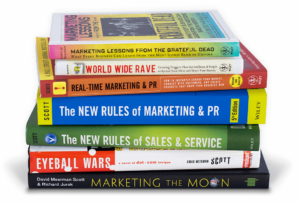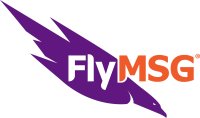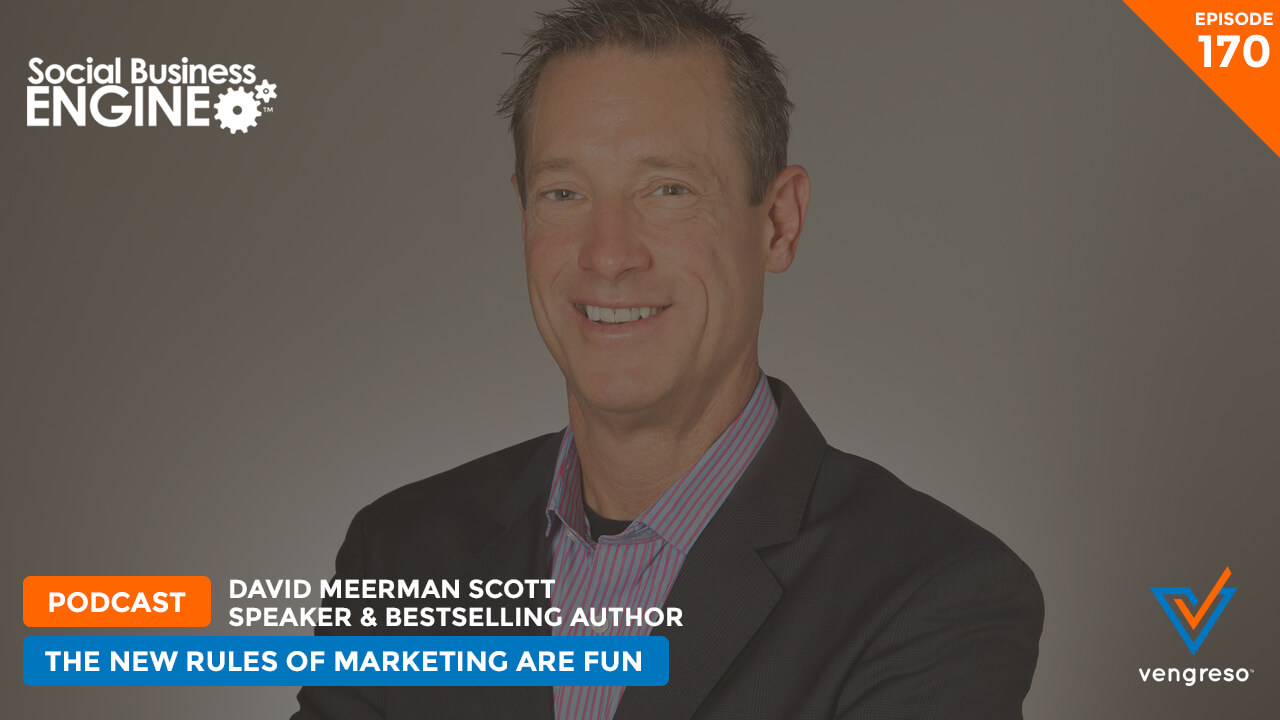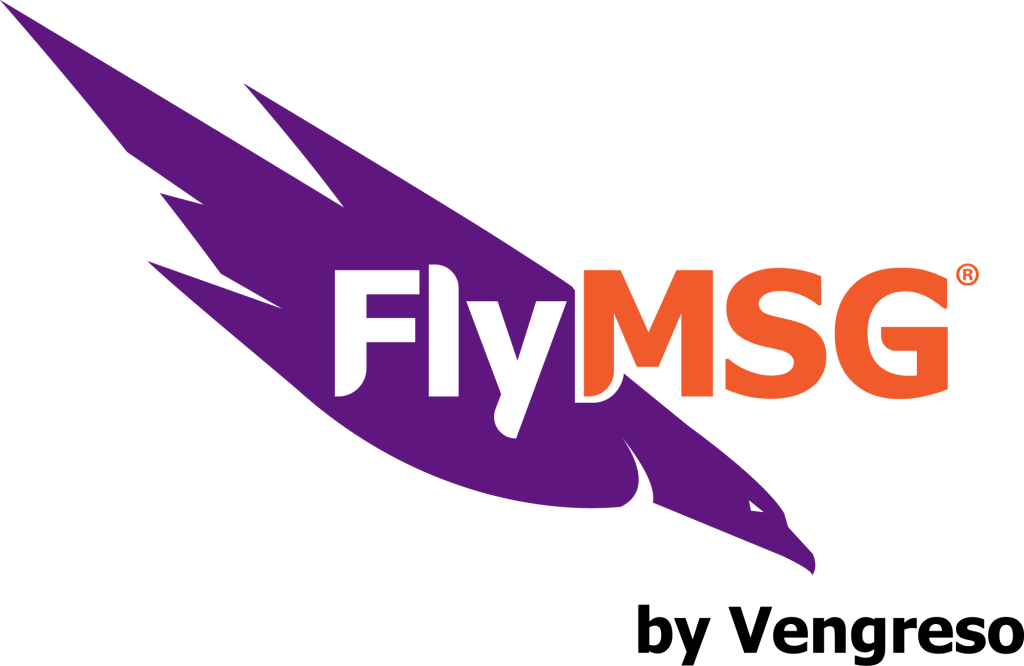David Meerman Scott is a globe-trotting speaker and international best-selling author. He is also on the advisory board at Vengreso, where I’m CMO and a co-founder. It’s truly an honor to know David, as I’ve long admired his body of work. David has published ten books on , one of which has become a classic. He’s a successful practitioner of the marketing strategies and tactics he references. The case study examples he shares in this podcast will inspire you.
If you ever get a chance to see David Meerman Scott speak, I promise you two things: he’s very high energy, and he will blow your mind with insights, ideas, and examples of real people and real businesses succeeding with the new rules of marketing and PR. In this podcast episode, David and I discuss what’s new in the latest edition of this classic The New Rules of Marketing and PR, and he also explains why a lot of his content is ungated.

What’s New in the 6th Edition of The New Rules of Marketing and PR
The New Rules of Marketing and PR was first published in 2007 and is now in its sixth edition. It spent six months on the BusinessWeek bestseller list. More than 375,000 copies have sold in English, and it’s available in 29 languages. David says that the strategies he discusses in the book have not changed, however, there are new ways to reach buyers surfacing all the time.
The old ways of marketing included paying for advertising, asking the media to cover your product and other traditional selling methods. The new way to earn attention is to publish great content that people are eager to share. Many people have wrongly applied the old rules to the new online world. In general, the strategies are the same; it’s the tools that have changed.
In 2007 when the first edition was published, Twitter barely existed, and Facebook was only available to students. Now Facebook is open to all, and we have capabilities like Facebook Live and Snapchat stories, to name a few. David has eliminated the chapter on mobile marketing. He says it’s now ubiquitous, so he’s integrated mobile concepts into other sections of the book.
One example David mentions is Matt Risinger and how he primarily uses YouTube to promote his business building high-end homes in Austin, Texas. Due to the popularity of his channel, he’s able to monetize it. The following he built has allowed him to increase his sales to 15 million dollars a year, and the monetization brings in another $150,000.
Gated versus Ungated Content
David says if you publish your content ungated you eliminate the roadblock to download. This makes the content more likely to be shared. His content follows this model and has been shared over 20 million times. Your objectives will impact your decision of whether to gate your content or not. Organizations looking to generate leads will gate their content. David recommends a hybrid approach where you offer a big piece of content for free, and within that content include a secondary offer with a gate. The leads you’ll receive will likely be higher quality too.
Though I’ve not read them all, my favorite book of David’s is World Wide Rave. It’s now available for free to download, and it’s not gated. The book covers viral content and creating something that others are eager to share. Removing the gated requirements aligns with his virality theory in World Wide Rave. The book has been downloaded and read tens of thousands of times. Following the same model of sharing ungated content, David created a 158 page Slideshare based on his book The New Rules of Sales and Service. It’s received nearly 300,000 views.
Real-Time Communications Create Opportunities for Newsjacking
In 2007 it took Google weeks to index a blog post. Today, blog posts are indexed instantly, social networks allow you to share your content immediately, and we have many options for live streaming. The digital world is now real-time and opens up the opportunity for newsjacking. David says newsjacking is “the art and science of injecting your ideas into a breaking news story.” Look for news stories in your industry and add your viewpoint. You can learn more about newsjacking at newsjacking.com.
President Donald Trump’s actions during the presidential campaigns are an example of newsjacking. By tweeting throughout Hillary Clinton’s speeches, Trump was doing newsjacking. The night that Trump was declared President, David quickly created the blog post The Best Marketer Has Been Elected President – another example of newsjacking. The post elicited quotes of David by dozens of media outlets and brought him many invitations to speak about Trump’s marketing prowess.
The owner of Cash for Purses, Trent Silver, newsjacked a story about Lindsay Lohan going broke by offering to buy her designer purses in a blog post. Major media outlets referenced his post, and it boosted his sales by $225,000. Newsjacking can tie humor to celebrity content, expertise to political news, or any other angles shared in real-time.
David claims, “This kind of marketing is fun. It’s no longer dreadful.” The process of creating content, pushing it out to people, and then interacting with them is enjoyable.
[clickToTweet tweet=”‘This kind of marketing is fun. It’s no longer dreadful.’ @DMScott #contentmarketing” quote=”‘This kind of marketing is fun. It’s no longer dreadful.’ @DMScott #contentmarketing”]
P.S. Meet me at the Sales 3.0 conference where I’ll be recording interviews for the Social Business Engine podcast.
Featured On This Episode:
- David Meerman Scott on LinkedIn and Twitter
- David Meerman Scott’s website
- Visit the Vengreso website
- Follow Vengreso on Twitter
- Social Media Strategies Summit’s website – Use the code SBENYC for 15% off of the 2017 New York event!
- Discover how to boost your sales through the Vengreso Social Selling Virtual Boot Camp
- Write a review of this podcast in iTunes
- Social Business Engine on Twitter: @sbengine
There are TWO WAYS you can listen to this podcast. You can click the Listen Now button at the top of this page…
Or, you can listen from your mobile device’s podcast player through iTunes or Stitcher.




